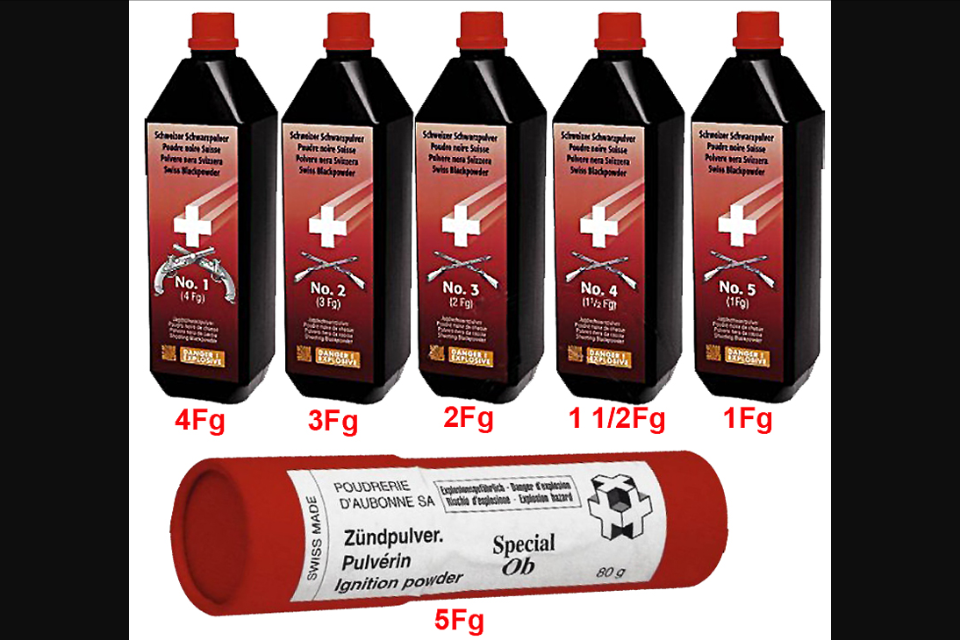4F burns faster. The faster a powder burns the greater the pressure.
You don't need 4F pressure data to verify that.
80 grains 3F produces higher pressures than 80 grains 2F.
80 grains 2F produces more pressure than 80 grains 1F.
There IS pressure Data that proves this.
Tbe pressure also developes FASTER the finer the powder.
'THE IOWA' and 'THE MISSOURI' was. I know it was near fist size ganulations.
I know that if someone put the same charge of 1F powder in one of those 16 inch guns, it would blow up the gun.
1F is normally used in cannon, by the way. The 24 pounder used 1F.
2F is for .45 and above rifle and musket.
It was NEVER used in Cannon during any battle.
3F is for under .45 caliber rifle, musket, pistol, revolver, and pepper box.
So if we use scale and compare the 1f as used in a cannon and 2F in a ,50 rifle......????
Yes seemingly 4F would produce more pressure, but how much more? Also the Lyman
actual test results published indicate that 4f does not always produce more pressure than 3f. Which makes sense, since there are many, many other factors that contribute to the amount of pressure produced in a gun barrel in addition to powder charge.
All indications are 4F is safe to use in rifles and shotguns. There has been not a single shred of evidence produced by those who say otherwise. Whereas there has been a sizable body of evidence provided here to the contrary.
Why the F' anyone would want to ise 4F as a main charge eludes me.
What do they think they are going to gain?
If you want to increase velocity, move UP a granulation or two and increase the charge, (example: .45 caliber side lock percussion, using 1F can go up to 140 grains safely 2F up to 110 grains. 3F 90 grains)
Why use it? In order to get better performance, including less fouling, which is verifiable, and because it is as perfectly safe as using 3f or 2f.
On every can of 4F I have ever seen, it states on the lable "FOR PRIMING ONLY"
Why do some think they know more than the manufacturer?
"Back in the day" 4F was NEVER used as the main powder charge. I just do not understand how some are so stupid.
They should turn on their brain before picking up their ML, and leave it on when shooting.
They are not only endangering themselves but those in the area, as well. (shrapnel)
Want "hard data"? Refer to the reloading manuals.
What the manufacturer knows is that they furnished data using 4f until lawyers got involved, so they added the legalese. Fact is 3f or 2f even will work in the pan and using part of the main charge from a paper cartridge as priming powder is historically correct and what many soldiers actually did. So we don't even really need 4f, in which case if it was truly "dangerous" they would quit selling it, or put it in a much different looking can and a smaller one at that.
Lawyers and Nancies.
Would you use a fast furning powder in you .458WM? Of course not! You would use a slow burning powder, just like the reloading manuals say to.
Same thing with a ML and 4F as the main charge.
Well actually, at the risk of getting off topic, yes there are fast powder, light projectile loads for the ,458 as gallery, plinking, target or small game loads, and there are data sources that list them.
I don't know if Lyman, for instance, in their ML loading manual bothered with 4F main loads and the pressures involved.
They may have forgotten "There is no limit to human stupidity." (A. Einstein)
Is that why all of the older loading manuals are edited as well? Because "There is no limit to human stupidity."? Nope. Lawyers and Nancies are the problem.
The stupidity here is not in using 4f in a main charge, but in not using it because one is afraid of something that doesn't exist, as with so many other things these days.
Look on the internet and in printed books. There are
no cases whatsoever that I can find that show 4f causing
any damage whatsoever to a muzzleloading firearm when used as a main charge. Plenty on smokeless sure, but
NONE with 4f.
Sure you might be able to blow up a barrel with it, but
you could also blow up a barrel with 3f or 2f.
Pressure is not bad. We need pressure to make the ball fly. It is all in how much pressure and correct charges of 4f will work as well, or better in some ways than 3f or 2f. Also as I said there are many other factors in how much pressure is generated in a given load.








